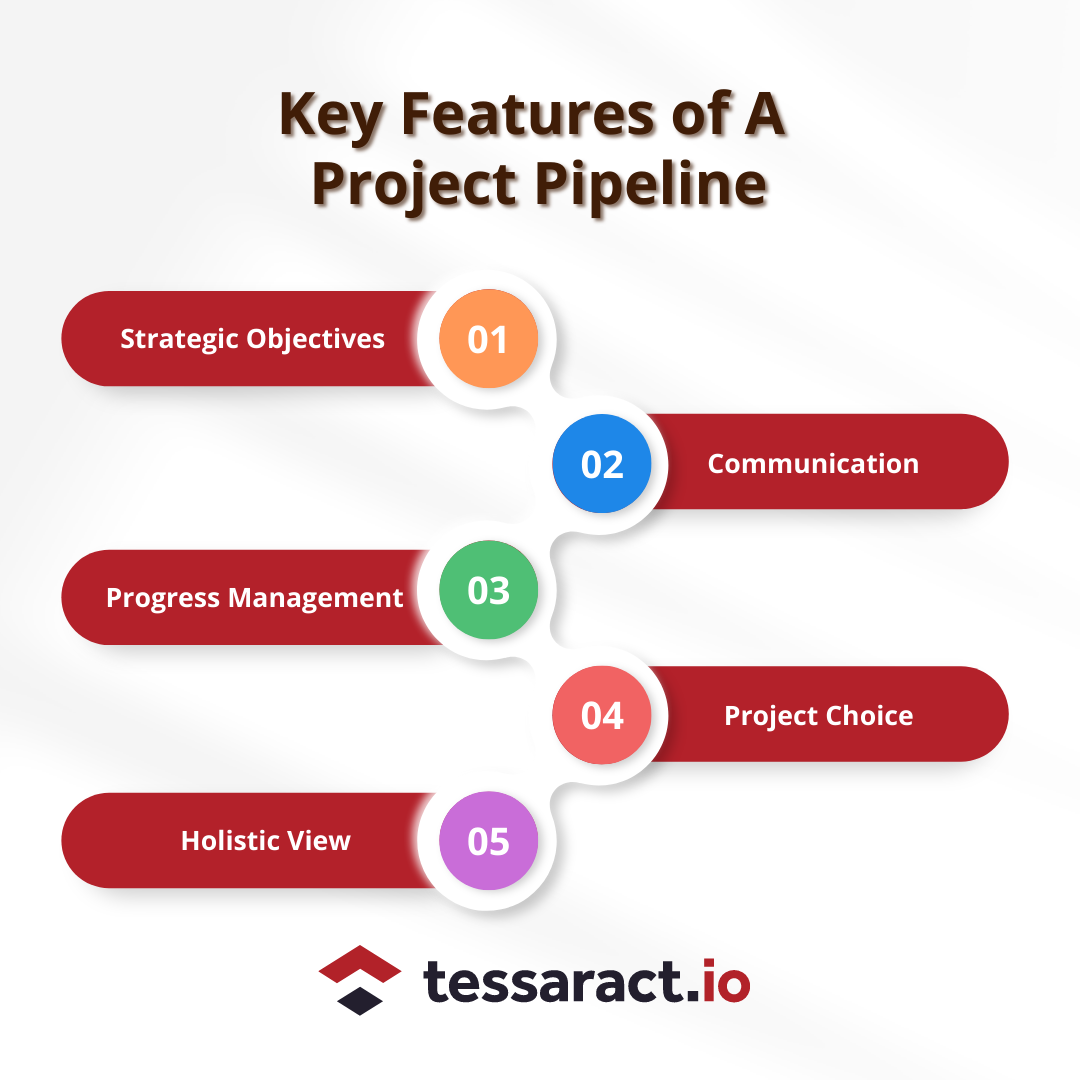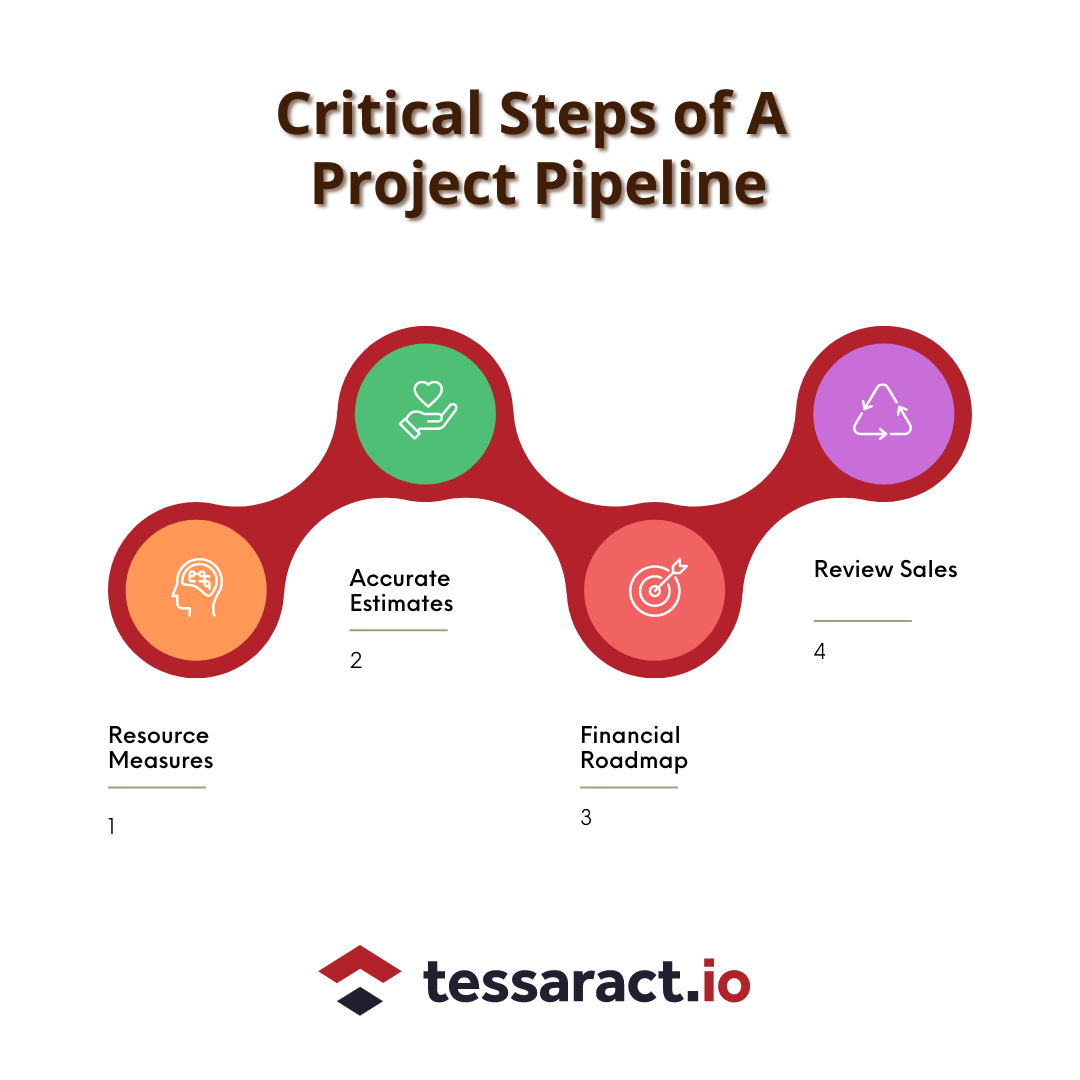Project management can be tricky, especially if you're working on an organisational basis. Whether you're gathering resources, finishing tasks before their deadlines, or allocating a budget, workflow is all over the place.
To reach the finish line with efficiency and accuracy, you must keep a firm track of all your projects from conception to completion. You must be wondering, "Well, how exactly am I supposed to do that?"
Look no further because we've got your answer. The key to managing a project expertly is through a project pipeline, allowing you to work smarter! So keep reading to find out all about project pipelines and their essential steps. Or, check out the latest project management trends in 2022 that will help you manage your project efficiently!
What is a project pipeline?
The term "project pipeline" refers to the process consisting of all the steps required to complete a specific project for a business. That includes the scope assessment, revenue estimation, and the preparation of appropriate resources beforehand.
The end goal for project management pipelines is to ensure that all projects meet the firm's overall strategic objectives and influence the bottom line as planned. Therefore, one of the main aspects of a project pipeline is that it selects the right projects in the first place.
As a result, business owners or project managers can track each project's phases and progress. This study from HBR tells us that companies with effective pipeline management have an average growth rate of 5.3%, which is 15% more than those who don't.

Objective
A project pipeline has the main objective of ensuring no critical project metric is overlooked. In addition, there are certain factors that the project pipeline facilitates, including financial estimation, resource capacity plan, and the systematic documentation of the project plan. Setting the project objectives and agenda through a project kick-off meeting is the first key step in your project management journey. Here are a few primary objectives of the project pipeline.
Better Communication
Firstly, project pipelines help streamline the sales process with the help of seamless collaboration between the sales team and the delivery team. This ensures that everyone in the organisation is on the same page, making it easier to align the projects with the company goals and vision. For example, having a weekly workplan will help your team members to keep track of their daily and weekly tasks.
Progress Management
Other than that, the project pipeline also specialises in broadly tracking and managing the progress of each project through methods like the agile workflow or the pareto distribution. This way, project managers can easily understand the performance at all project stages that are done or yet to be completed. A workflow automation solution like Tessaract will give you the oversight and productivity to complete your goals efficiently through digital workflows and reduce time spent on repetitive tasks.
Project Choice
Aside from helping manage projects, project pipelines also help you pick the right projects in the first place. These pipelines assess the project's revenue, purpose, and feasibility to align with the company goals.
If the project pipeline discovers that the project adds no value to the company's objectives, then the project manager won't invest the company's time or money into it.
Holistic View
When completing projects on a bigger scale, it's easy to get lost in the details and lose sight of the bigger picture. Project pipelines provide a bird's eye view to rearrange your priorities based on the progress or last-minute changes.
Critical Steps for a Project Pipeline Management
Here are a few steps to ensure you're implementing your project pipeline correctly.

Resourcing Measures
The first step is to ensure that you implement the proper resourcing measures. Then, you can analyse if you have enough of the appropriate resources to complete a specific project. Gauging your workforce's competency will ensure that the quality of your project isn't compromised with exemplar work performance and high performance culture in your company.
This step will help you assess the available capacity of the resources and the required costs for each phase of the project. Resource levelling is a technique that can prove to be useful in this step, as it involves resolving overallocation or scheduling conflicts to make sure that a project is viable for completion with the current resources. Project managers can take the necessary measures (hiring, upskilling) before beginning the project.
Accurate Estimates
The second step includes gauging every aspect with a closer eye to make accurate estimates for your business needs. This step is essential if you want to recognise future bottlenecks or potential risks in the project.
If your estimations of resources are inaccurate, you'll face challenges in the future when executing the project. As a result, you'll be looking left to right, requesting last-minute resources from resource managers or suppliers.
This will only result in a budget overrun and exceeding the project timeline, so it's crucial for project managers to precisely measure the budget, risk, goals, and revenue expected before taking on a project.
Financial Roadmap
While working on a project via a project pipeline, it's essential to build a financial roadmap to partner with. When your project is profitable and gets your company a significant return on investment (ROI), the top line of your business improves naturally.
To ensure you get a high ROI, you must create a sound financial roadmap that considers these factors:
- Profitability such as OKR and KPI goals (categorise projects into likely, unlikely, and certain.)
- The appropriate skill sets to meet the expected budget.
- Appropriate work allocation based on task priority and team member competency.
- Forecast vs Actual reports of past projects.
- What-if simulations on advanced tools to practice risk mitigation in worst-case scenarios.
Review Sales
Lastly, you must ensure that you're reviewing and improving the project's sales process now and then. A successful project pipeline is based almost entirely on an effective sales process.
Your company's sales team must coordinate with the project management team to track the progress of each project while they generate leads. A project manager must consider these factors while reviewing the sales process:
- Categorizing each project to understand each phase better and provide better visibility to the delivery team.
- Regular communication with the delivery team to ensure the project aligns with the customer requirements.
- Inclusion of the accounts team for timely payments every step of the way.
- Review the historical data of previous sales processes to avoid mistakes and mitigate risks better.
Conclusion
The bottom line is that project pipelines are the best way to achieve the expected ROI and customer satisfaction with each project. That's why it's essential to invest company time and money in the digitalisation of the exemplary aspects of a project pipeline.
Tessaract ensures your company's success in integrating project management and a project pipeline in many ways. This holistic business management solution streamlines all your company tasks through corporate tools like digital signing, custom form builders and so much more while giving you the necessary control for ensured growth. Stay ahead with the cloud with Tessaract's cloud-native, no-code workflow automation solution and get a head start on your cloud strategy.
Request a demo with Tessaract and power your business now to optimise your project management pipeline through a digital transformation roadmap.
